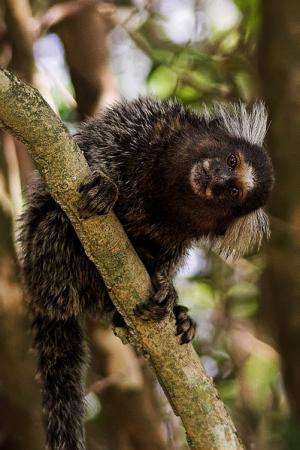August 14, 2015 report
New evidence suggests marmosets learn vocalizations from parents

(Phys.org)—A team of researchers with Princeton University has found that marmosets appear to learn at least some of their vocalizations from their parents. In their paper published in the journal Science, the group describes a study they carried out with the little South American monkeys and what they learned from it. David Margoliash with the University of Chicago and Ofer Tchernichovski with City University of New York offer some insight into the work done by the team in a Perspectives piece in the same journal edition.
There has been a belief in modern science that only humans and songbirds can learn to make new sounds that have some sort of meaning, by listening to others. That may not be the case after all as the team at Princeton has carried out a study that appears to show infant marmosets learning to vocalize in an adult fashion, by mimicking the calls of adults.
The study consisted of separating captive infants from their parents for short periods of time during the first two months of the infant's life (the time it takes for a marmoset to learn to talk like an adult) and recording the vocalizations that occurred as the infants and parents continued to chatter back and forth. In studying the recordings, the researchers were able to watch as clusters of noises from the young monkeys congregated, suggesting they were learning that certain noises held certain meaning. The researchers also recorded noises made by young and old individuals under normal circumstances and when they were kept completely isolated for short periods of time.
The researchers also recorded the size and weight of the marmosets as they grew and measured their respiratory abilities—doing so allowed them to see that the changes in the vocalizations that occurred over time were not likely the result of simple physical maturation.
In studying their recordings, the researchers discovered that young marmosets that had a high frequency of back and forth chatter with adults came to vocalize like an adult at a younger age than did other young monkeys that had less communication with adults. Taken together, the data suggests, the researchers claim, that marmosets learn to talk like an adult, by listening and mimicking adults.
Journal information: Science
© 2015 Phys.org



















